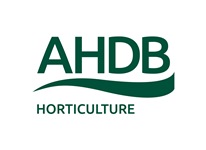All entries for Tuesday 28 June 2016
June 28, 2016
Pest update from Wellesbourne
Since last Friday we have captured:
In pheromone traps (2 per species):
- Turnip moth = 2
- Silver Y moth = 0
- Cabbage moth = 0
- Diamond-back moth = 19
On 3 sticky traps:
- Carrot fly = 6
In 3 water traps:
- Cabbage root fly males = 7
- Cabbage root fly females = 23
- Bean seed flies = 120
- Flea beetles = 16
- Pollen beetles = 525
- Cabbage stem weevils = 3
Cabbage root fly eggs = 9 (15 plants)
Brassica aphids and virus News
The proportion of peach potato aphid (M. persicae) carrying Turnip yellows virus (TuYV)
|
Date |
Type of trap |
Numbers of M. persicae caught |
% of those tested carrying TuYV |
|
Wellesbourne, Warwickshire |
|||
|
13-19/06/2016 |
Suction trap |
183 |
57% |
|
16-20/06/2016 |
Yellow water traps |
>2850 |
88% |
|
20-23/06/2016 |
Yellow water traps |
550 |
73% |
|
Kirton, Lincolnshire |
|||
|
13-19/06/2016 |
Suction trap |
60 |
71% |
|
Leverton, Lincolnshire |
|||
|
16-20/06/2016 |
Yellow water traps |
22 |
73% |
|
20-23/06/2016 |
Yellow water traps |
34 |
56% |
Turnip yellows virus (TuYV), formerly known as Beet western yellows virus, is a very important pathogen of vegetable brassicas and oilseed rape. It is spread by the peach potato aphid (Myzus persicae).
This data is collected as part of project ‘Developing integrated approaches for pest and disease control in horticultural field crops’ with funding from the BBSRC Horticulture And Potato Initiative (HAPI).
Diana Katschnig and Angela Hambidge, Plant-Virus Interactions Group, University of Warwick; Alex Greenslade, Rothamsted Research & Rothamsted Insect Survey; Simon Jackson, Allium & Brassica Agronomy Ltd.
The diamond–back moth infestation at Wellesbourne
One of the trials on cabbage at Wellesbourne (focused on aphids) was infested with diamond-back moth and we did a small pre-spray count (4 x 5 plants) before it was treated (with spinosad (Tracer) last Friday). There were an average of 8.7 caterpillars per plant on Friday before the spray was applied and 0.6 caterpillars per plant yesterday.
As the whole trial was treated there is no 'untreated control' so we cannot be certain that the numbers of caterpillars didn't decrease for another reason e.g. the weather - but the results do suggest that they succumbed due to the treatment.
 Rosemary Collier
Rosemary Collier

 Please wait - comments are loading
Please wait - comments are loading
 Loading…
Loading…
